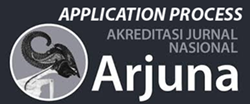Developing Video Tutorials Based on Canva Application with Basic Competencies to Make Digital Gamis Patterns
DOI:
https://doi.org/10.59653/jimat.v3i02.1740Keywords:
Learning media, Canva Application, Digital Gamis PatternsAbstract
This research is motivated by the need to improve the effectiveness of learning, considering that there are still many teachers who in teaching and learning activities use learning media that can be further developed to be more interactive and interesting, such as handouts and PowerPoint. The purpose of this research is to: 1) determine the feasibility of Canva application-based video tutorials on the basic competencies of making digital gamis in class XII students of the Fashion Management Department of SMKN 2 Jombang, 2) determine the response of students to the development of Canva application-based video tutorials on the basic competencies of making digital gamis patterns in Class XII students of the Fashion Management Department of SMKN 2 Jombang, 3) determine the learning outcomes of Class XII students of the Fashion Management Department of SMKN 2 Jombang who use Canva application-based learning media on the basic competencies of making digital gamis patterns. In addition, the response of students showed a percentage of 84%. The results showed that the Canva application-based learning media met the validity criteria based on the assessment of material experts, media experts and linguists. Based on the trial use of the media in learning, students show high interest in learning and easily understand the material provided. The conclusion of this study is that learning media based on the canva application can improve students` understanding so that they do not experience difficulties in practicum learning.
Downloads
References
Alfian, A. N., Putra, M. Y., Arifin, R. W., & Barokah, A. (2022). Pemanfaatan Media Pembelajaran Audio Visual Berbasis Aplikasi Canva. Jurnal Abdimas (Pengabdian Kepada Masyarakat) UBJ, 5(1), 75–84. https://ejurnal.ubharajaya.ac.id/index.php/Jabdimas/article/view/2647
Arikunto, S. (2013). Prosedur Penelitian: Suatu Pendekatan Praktik (Cet. 15). Jakarta : Rineka Cipta.
Arsyad, A. (2017). Media Pembelajaran. PT Raja Grafindo Persada, Jakarta.
Asyhari, A., & Silvia, H. (2016). Pengembangan Media Pembelajaran Berupa Buletin Dalam Bentuk Buku Saku Untuk Pembelajaran IPA Terpadu. Jurnal Ilmiah Pendidikan Fisika Al-Biruni, 5(1), 1–13. https://doi.org/10.24042/jpifalbiruni.v5i1.100
Aulia, N., Sarinah, S., & Juanda, J. (2013). Analisis Kurikulum Merdeka dan Kurikulum 2013. Jurnal Literasi dan Pembelajaran Indonesia, 3(1), 14–20. https://doi.org/10.56876/jlpi.v3i1.363
Badan Standar Pendidikan Nasional. (2008). Lembar Validasi Instrumen Kelayakan Materi Pembelajaran. Jakarta: Badan Standar Pendidikan Nasional.
Dzul Hijjah, R., Russanti, I., Mayasari, P., & Nahari, I. (2023). Pengembangan Media Pembelajaran Video Berbasis Aplikasi Camtasia Pada Kompetensi Pembuatan Busana Tunik di Kelas XII SMK Negeri 3 Kediri. Jurnal Pendidikan Vokasi, 12(2), 150–160. https://doi.org/10.31004/jptam.v7i1.5469
Fathurrohman, P., & Sutikno, M. S. (2007). Strategi Belajar Mengajar: Strategi Mewujudkan Pembelajaran Bermakna Melalui Penanaman Konsep Umum dan Konsep Islami. Refika Aditama, Bandung.
Fernandes, R. (2019). Relevansi Kurikulum 2013 dengan Kebutuhan Peserta Didik di Era Revolusi 4.0. Jurnal Socius: Journal of Sociology Research and Education, 6(2), 1–13. https://doi.org/10.24036/scs.v6i2.157
Firdausya, D. R., & Wahyuningsih, U. (2024). Pengembangan Media E-Modul Pada Materi Pembuatan Pola Blouse Di Kelas X SMKN 1 Kudus. Cendikia: Jurnal Pendidikan Dan Pengajaran, 2(5), 188–195. https://doi.org/10.572349/cendikia.v2i5.1418
Fithriyah, I., & As’ari, A. R. (2012). Pengembangan Media Pembelajaran Buku Saku Materi Luas Permukaan Bangun Ruang Untuk Jenjang SMP. Jurnal Matematika, 1(3), 1–8. https://repository.um.ac.id/id/eprint/17348
Fitria, P., Rahmawati, R., & Hidayah, N. (2021). Manajemen Keuangan Di SMPN 1 Curug. Pensa: Jurnal Pendidikan Dan Ilmu Sosial, 3(3), 386–394. https://ejournal.stitpn.ac.id/index.php/pensa/article/view/1520
Gandini, G., Russanti, I., Arifiana, D., & Nashikhah, M. (2023). Pengembangan Media Video Pembuatan Pola Rok Dengan Aplikasi Richpeace-DGS Untuk Siswa Tata Busana Kelas XI SMK Negeri 1 Sooko. Jurnal Pendidikan Tambusai, 7(1), 1523–1531. https://doi.org/10.31004/jptam.v7i1.5453
Gerlach, V. S., & Ely, D. P. (1971). Teaching and Media: A Systematic Approach. Prentice-Hall. Englewood Cliffs, NJ, USA.
Hamdani. (2015). Pengaruh Minat Belajar Dan Motivasi Belajar Terhadap Prestasi Belajar Matematika (Survei Pada Siswa SMP Negeri Di Kabupaten Bekasi). ALFARISI: Jurnal Pendidikan MIPA, 1(2), 1–7. https://doi.org/10.29300/alfarisi.v1i2.5668
Hapsari, G. P. P., & Zulherman, Z. (2021). Pengembangan Media Video Animasi Berbasis Aplikasi Canva Untuk Meningkatkan Motivasi dan Prestasi Belajar Siswa. Jurnal Basicedu, 5(4), 2384–2394. https://doi.org/10.31004/basicedu.v5i4.1237
Hernawan, A. H., & Andriyani, D. (2011). Hakikat Kurikulum dan Pembelajaran. Kurikulum dan Pembelajaran Ekop, 1(1), 1–42. https://repository.ut.ac.id/4040/1/PKOP4303-M1.pdf.
Hidayah, N. R., Mustaji, M., Roesminingsih, E., Setyowati, S., & Hariyati, N. (2022). Pengaruh Pengelolaan Kelas Dan Iklim Kelas Terhadap Hasil Belajar Siswa. Journal Of Education Research, 5(2), 2386–2395. https://doi.org/10.37985/jer.v5i2.1055
Hijjah, R. D., Russanti, I., Mayasari, P., & Nahari, I. (2023). Pengembangan Media Pembelajaran Video Berbasis Aplikasi Camtasia Pada Kompetensi Pembuatan Busana Tunik Di Kelas XII SMK Negeri 3 Kediri. Jurnal Pendidikan Tambusai, 7(1), 1648–1657. https://doi.org/10.31004/jptam.v7i1.5469
Kosassy, S. O. (2017). Analisis Konsep dan Implementasi Kurikulum 2013. Pelita Bangsa Pelestari Pancasila, 12(1), 1. https://doi.org/10.31258/jpb.12.1.78-89
Kurnia, I. R., & Sunaryati, T. (2023). Media Pembelajaran Video Berbasis Aplikasi Canva Untuk Meningkatkan Minat Belajar Siswa. Journal Educatio FKIP UNMA, 9(3), 1357–1363. https://doi.org/10.31949/educatio.v9i3.5579
Downloads
Published
How to Cite
Issue
Section
Categories
License
Copyright (c) 2025 Febrianita Yulia Ningrum, Ma'rifatun Nashikhah, Mita Yuniati, Mein Kharnolis

This work is licensed under a Creative Commons Attribution-ShareAlike 4.0 International License.
Authors who publish with this journal agree to the following terms:
- Authors retain copyright and grant the journal right of first publication with the work simultaneously licensed under a Creative Commons Attribution-ShareAlike that allows others to share the work with an acknowledgement of the work's authorship and initial publication in this journal.
- Authors are able to enter into separate, additional contractual arrangements for the non-exclusive distribution of the journal's published version of the work (e.g., post it to an institutional repository or publish it in a book), with an acknowledgement of its initial publication in this journal.
- Authors are permitted and encouraged to post their work online (e.g., in institutional repositories or on their website) prior to and during the submission process, as it can lead to productive exchanges, as well as earlier and greater citation of published work (See The Effect of Open Access).























